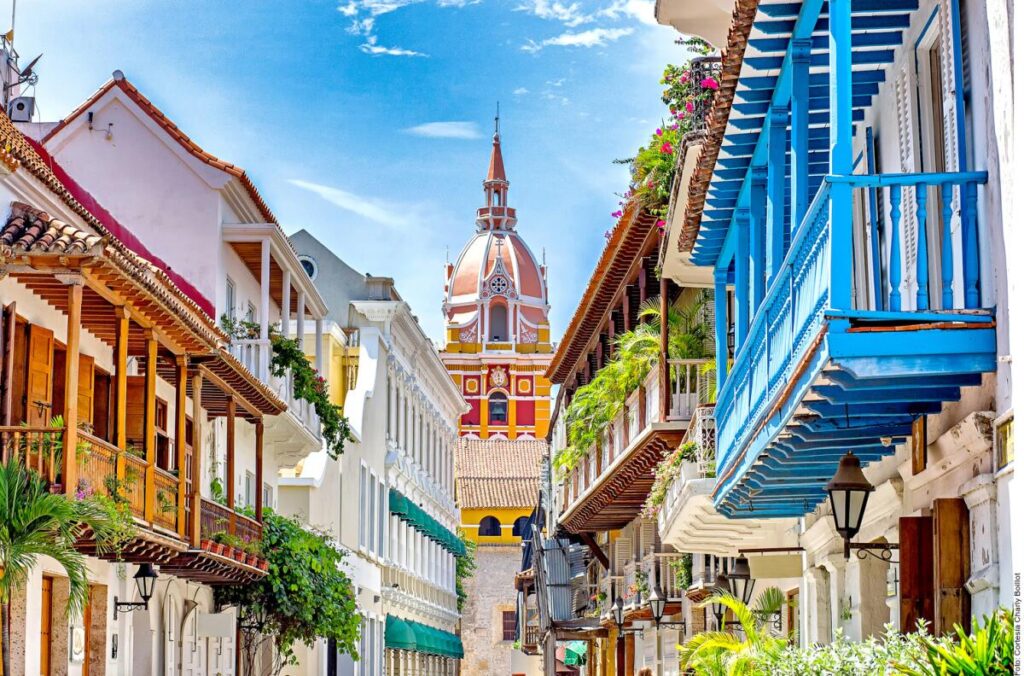
Cartagena is a city of immense historical significance, known for its rich colonial past and vibrant cultural heritage. Its well-preserved architecture and historical sites have earned it the prestigious UNESCO World Heritage status, making it a prime destination for history enthusiasts and travelers alike. Exploring Cartagena’s rich history reveals its enduring legacy and the blend of cultures that have shaped its unique identity.
The Walled City Cartagena (Ciudad Amurallada)
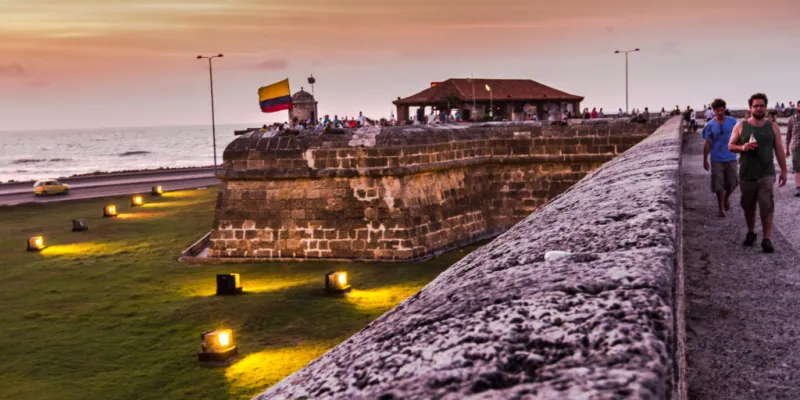
The Walled City (Ciudad Amurallada) in Cartagena is a UNESCO World Heritage site, known for its well-preserved colonial architecture and rich history. Built between the 16th and 18th centuries, the Walled City served as a defense against pirates and invaders. This reflects the Spanish Empire’s military engineering prowess.
Key sites within the Walled City include the iconic Clock Tower (Torre del Reloj), the vibrant Plaza Santo Domingo, the historic San Pedro Claver Church, and the famous Botero sculpture “Gertrudis.” Visitors can also explore the colorful streets of Getsemaní, colonial buildings, and bustling plazas. For a more laid-back vibe in Ciudad Amurallada, enjoy cocktails at one of the many bars and clubs in Cartagena while watching the sunset over the Caribbean Sea and listening to live music.
To make sure you won’t miss out on any of the best sites, we recommend a guided walking tour in Cartagena’s Walled City. This will help you gain insights into the city’s history and architecture. We also recommend early morning or late afternoon tours to avoid the midday heat. Be sure to wear comfortable shoes, stay hydrated, and bring sunscreen.
Now that you have an idea of what to expect for your tour of the Walled City, let us custom-make an itinerary for your tour of this historical and cultural site.
Cartagena History Unveiled: Exploring Castillo de San Felipe
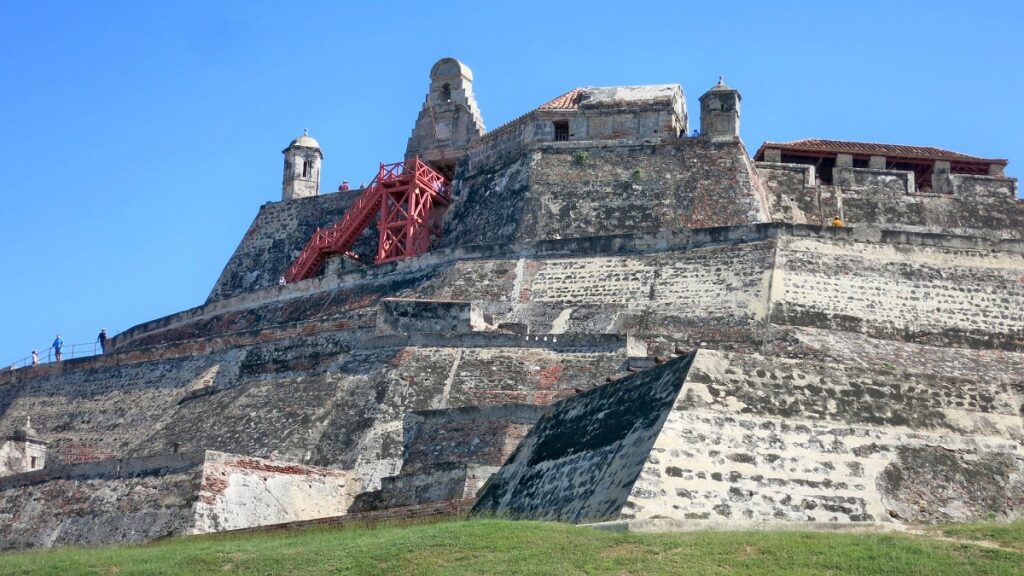
Castillo San Felipe de Barajas, just east of the Getsemaní neighborhood, is a formidable fortress built by the Spanish in the 17th century to protect the city from pirate attacks and invasions. The castle strategically sits on top of a 130-foot hill, which offers panoramic views of the city. Other key features of Castillo San Felipe de Barajas include an extensive network of batteries and bastions, robust walls, well-preserved cannons, and a complex system of tunnels through its mountain base.
The key historical significance of this site includes its crucial role in repelling the British siege in 1741. You can explore the maze-like tunnels and various battlements, enjoy panoramic views of Cartagena, and learn about its history through informative displays.
For the best experience, take a guided tour to learn about its history and strategic importance. Wear comfortable shoes, bring water, and visit early in the morning or late afternoon to avoid the midday heat. The site is open daily from 8 am to 6 pm with an entrance fee of $8 for adults and $3 for kids.
Need help planning your tour of Castillo San Felipe de Barajas? Contact us for a consultation today. Our concierge team can book tours, restaurants, and much more.
Palacio de la Inquisición Cartagena
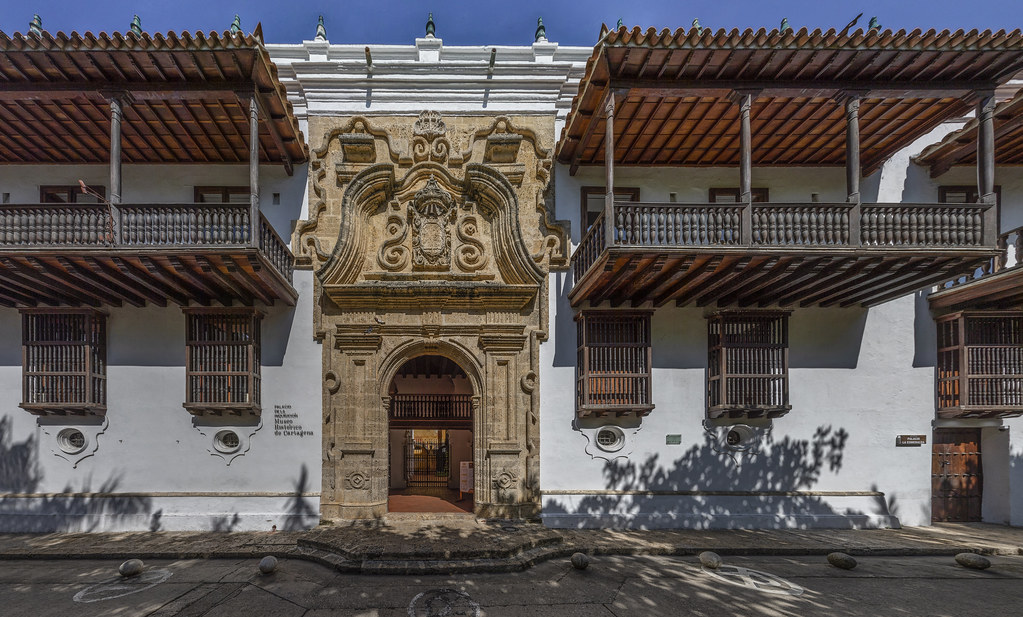
The Palacio de la Inquisición in Cartagena is a striking example of colonial architecture and a significant historical site, originally established in 1610. This historic building served as the headquarters for the Spanish Inquisition, where trials and interrogations took place.
Inside, the palace houses a museum that details the dark history of the Inquisition in Cartagena history. Key exhibits include torture devices/instruments used to extract confessions from those accused of heresy, witchcraft, and other crimes against the Catholic faith. It also houses ancient maps and colonial-era artifacts that shed light on the city’s tumultuous past. The palace’s artifacts such as manuscripts, religious icons, and personal items of the accused provide a glimpse into the harsh realities of the Inquisition period.
The historical importance of the Palacio de la Inquisición lies in its role as a symbol of colonial judicial power and religious persecution, reflecting the broader narrative of Spanish colonial rule in the Americas. The palace stands as a reminder of the turbulent times during the Inquisition and serves as an educational site for visitors, preserving the memory of those who suffered under its regime.
Eager to explore Palacio de la Inquisición yourself? Contact us now and kickstart the adventure of a lifetime with the help of our expert!
San Pedro Claver Church Cartagena
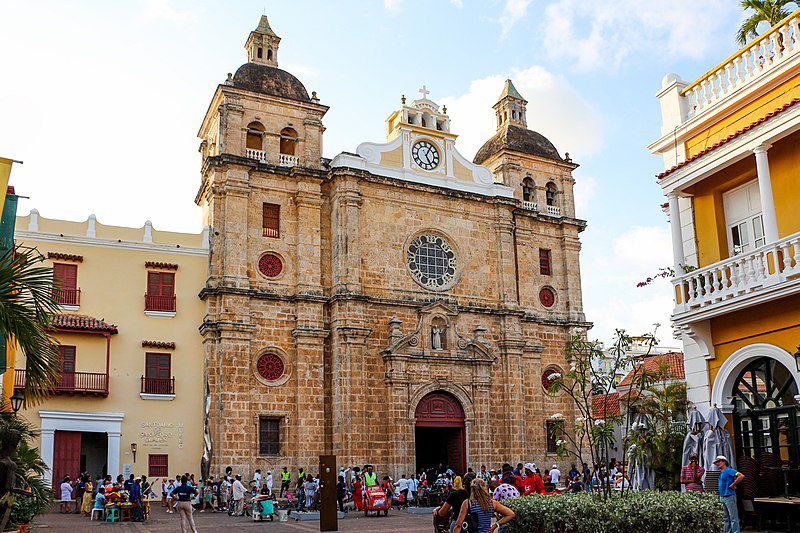
San Pedro Claver Church and Convent, located near the western edge of Cartagena, is a historical and cultural landmark dedicated to Saint Peter Claver, an ordained priest known for his work with enslaved Africans. He primarily offered spiritual guidance to thousands of slaves and baptized over 300, 000 people. This is one of the most important places in Cartagena’s history.
Built in the 17th century, the church’s architectural highlights include a stunning stone facade, an intricately designed altar, and a serene courtyard. Inside, you will see the remains of Saint Peter Claver through a glass coffin enshrined in the altar of the main church. There are also artifacts related to his life and mission.
Located in the Walled City, San Pedro Claver Church and Convent is open daily:
- Monday to Friday: 8 am – 6 pm
- Saturday and Sunday: 8 am – 5 pm
We recommend visitors dress modestly and take our guided tours to fully appreciate the site’s rich history and architectural beauty.
Museum of Modern Art Cartagena
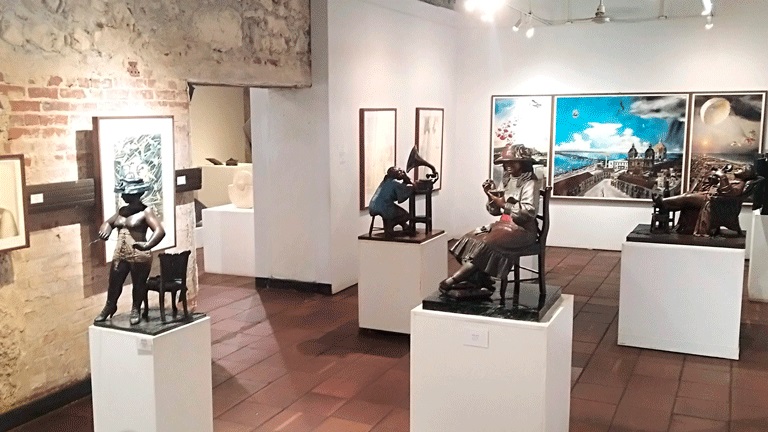
The Museum of Modern Art (Museo de Arte Moderno), established in 1979, is housed in a former colonial customs building in the heart of the Walled City. It showcases a rich collection of modern and contemporary art, featuring works by renowned Colombian and Latin American artists, such as Alejandro Obregón, Enrique Grau, Fernando Botero, etc.
For art enthusiasts, the Museum of Modern Art is a vital cultural institution that offers a deep dive into the evolution of Latin American art. Its collection provides deep insights into the region’s artistic trends, social issues, and cultural diversity. The intimate setting of the museum allows visitors to engage closely with the artworks, enhancing their appreciation and understanding more about Cartagena’s history.
Key exhibits to watch for include the permanent collection of works by Enrique Grau, whose paintings and sculptures reflect Colombian identity and culture. There are also temporary exhibitions that often feature contemporary artists who address current social and political themes. Additionally, the museum regularly hosts workshops, lectures, and cultural events, making it a dynamic space for artistic expression and dialogue.
Your Museum of Modern Art tour, our expertise! Contact us for assistance with tours, transport, accommodations, and reservations. Let us make your tour memorable.
Embracing Cartagena History: A Journey Through Time
Cartagena’s history is embodied in its key sites and landmarks: The Walled City (Ciudad Amurallada), Castillo San Felipe de Barajas, Palacio de la Inquisición, San Pedro Claver Church, and the Museum of Modern Art. Exploring these landmarks offers a deep dive into the city’s vibrant past and culture
For an enhanced experience, consider using our corporate concierge service for guided historical tours about Cartagena history. We provide expert insights, personalized itineraries, and seamless logistics, ensuring you make the most of your visit to this historically rich city.
You have officially discovered the must-see historical and cultural sites in Cartagena. Now all you need to do is book a ticket and experience it for yourself. Reach out to our team of experts for a personalized tour of Cartagena!
